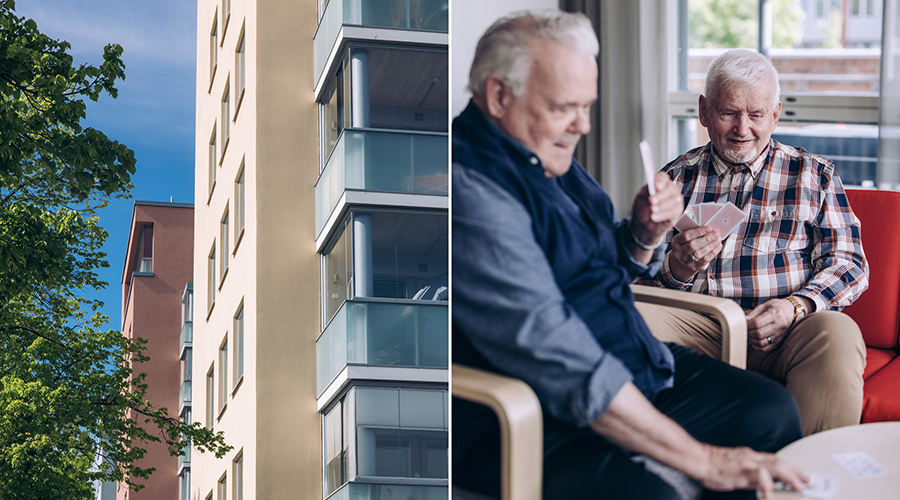In Finland, affordable social housing is mainly provided by municipality-owned companies and a few nationwide non-profit organisations. The production is financed through interest subsidy loans granted by a commercial bank or other financial institution like MuniFin. The loans are guaranteed by the Finnish state through The Housing Finance and Development Centre of Finland (ARA), which is administered by the Ministry of the Environment.
ARA has a major responsibility in the implementation of Finnish housing policy. The main objectives of the government’s housing policy development programme, updated in 2021, are building a carbon neutral society and improving the quality of construction, supporting sustainable urban development, increasing housing construction in growing urban areas and eradicating homelessness within two government terms.
Among other tasks addressed to the organisation, ARA grants guarantees for housing and construction as well as controls and supervises the use of the ARA housing stock. ARA also designates and maintains a list of non-profit organisations entitled to get interest subsidy loans.
MuniFin is the main financier of affordable social housing production in Finland. The loan periods are long, up to 41 years.
“This model ensures that the financing is long-lasting and predictable. At the moment, only MuniFin grants loans this long. The state guarantee affects the price of the loans making them cheaper” says Juha Kaakinen, a recently retired long-time CEO of Y-Foundation, one of the nationwide providers of affordable social housing and key developer of the Housing First principle in Finland.
“This is also a very inexpensive way for the state to produce affordable social housing”, Kaakinen continues.
ARA oversees the providers and projects. This ensures the apartments are of high quality.
“The quality of affordable social housing apartments is sometimes even better than the non-subsidised apartments.”
No family homelessness in Finland
Social mixing is a central and much valued pillar of Finnish housing policy. The right to housing is enshrined in the Finnish constitution. The biggest cities in Finland have for a long time had a principle of ensuring that 25% of new homes are affordable social housing apartments. Now the aim is to increase this share up to 35%.
The rent level of affordable housing apartments is significantly lower than in the private sector, especially in the Helsinki metropolitan area. Rising interest rates are increasing the funding expenses of the housing providers, which will also impact rents in the near future. ARA however recommends that the rents in the ARA housing stock should only be raised moderately.1
In clear contrast to other countries, e.g. the Netherlands and Austria, the residents are mainly people of low income, who are most in need of state-subsidised housing. The applicants are evaluated through three criteria: need, wealth and income. When comparing the applicants, homeless people and others in urgent need of an apartment, applicants with most limited needs and of lowest income are given priority.2 The ARA housing stock also includes homes for students, and residential homes for people with special needs, elderly people in poor health, and persons recovering from mental health problems.
The role of social housing has been remarkable in tackling homelessness.
“We have had a stable level of affordable housing production. Some years have been quieter than others, but 7000–9000 apartments have been built every year. The high and stable level of production differentiates Finland from other countries. And thanks to this, there’s no family homelessness in Finland”, Kaakinen says.
Social housing has also been instrumental in preventing segregation and facilitating work-related migration. Social housing influences rent levels in the private sector and lowers the costs of housing allowance granted by the state. The lower rent levels also makes it possible for people of low income to live closer to their workplaces and to manage on their salary.
“Living in a reasonably priced apartment may be the only possibility for many people to save enough money to buy an apartment of their own at some point, which is still something many Finns strive to”, Kaakinen continues.
Forerunners in fighting climate change
Many of the social housing providers have climate change high on their agenda. More and more wooden residential buildings are being constructed, and many of the providers have pilot projects for developing more sustainable buildings and construction methods. The energy efficiency of social housing buildings is generally higher than buildings of the private sector. According to Juha Kaakinen, the big question is how to transform social housing toward carbon neutrality in a way that maintains affordable rents.
“The social housing sector has shown its will and power to fight climate change. Still, new ideas are needed for example to transform existing buildings into affordable apartments”, Kaakinen says.
FACTS
There are 3.2 million apartments in Finland. Around 62% of all apartments are owned and 34% rented. 3 Around one third of all apartments have been constructed using state subsidies.4
MuniFin is the only credit institution in Finland that specialises solely in financing the municipal sector and non-profit housing production. At the end of 2021, 48% of MuniFin’s long-term customer finance portfolio consisted of loans granted for housing.
- https://www.ara.fi/fi-FI/Ajankohtaista/Uutiset_ja_tiedotteet/Uutiset_ja_tiedotteet_2022/ARA_suosittelee_maltillisia_vuokrankorot%2864112%29 (in Finnish)
- https://www.ara.fi/asukasvalinta (in Finnish)
- https://www.tilastokeskus.fi/tup/suoluk/suoluk_asuminen_en.html
- https://www.ara.fi/en-US/ARA_housing_stock




